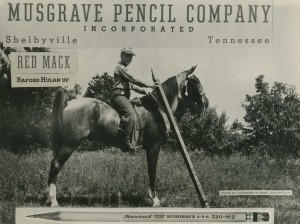Job Creation & The Big Bang Theory
Job Creation & The Big Bang Theory
 The year was 1966. I was 9 years old and had just started the fourth grade at St. Mark’s grade school in Peoria. When my mom questioned me about what school supplies I needed, I asked her to buy me a mechanical pencil (refillable lead pencil). I had asked for a mechanical pencil in the past, but was told that I didn’t need one. When my mom returned from the store, she surprised me with a new mechanical pencil.
The year was 1966. I was 9 years old and had just started the fourth grade at St. Mark’s grade school in Peoria. When my mom questioned me about what school supplies I needed, I asked her to buy me a mechanical pencil (refillable lead pencil). I had asked for a mechanical pencil in the past, but was told that I didn’t need one. When my mom returned from the store, she surprised me with a new mechanical pencil.
A couple of weeks ago I stopped at OfficeMax to pick up a couple of items for my office and there was a large display of different types of pens and pencils. Almost every time I walk into a megastore, such as OfficeMax, Wal-Mart or Lowe’s, I am (again) amazed at the massive floor space that is lined with huge shelving units that are stocked with thousands of everyday items that we all take for granted. How did all of the products on those shelves come into existence?
There’s a short essay with the title of “I, Pencil” that was written in 1958 by Leonard E. Read (1898–1983). Although Read was the author of 29 books and hundreds of essays, his most famous essay was “I, Pencil.” The essay gives a glimpse of what it takes to bring a simple wooden pencil into existence. It should be required reading for all eighth grade, high school, and college students.
The essay starts with a pencil talking (in the first person) about what goes into the making of all pencils:
I, Pencil, simple though I appear to be, merit your wonder and awe, a claim I shall attempt to prove. In fact, if you can understand me – no, that’s too much to ask of anyone – if you can become aware of the miraculousness which I symbolize, you can help save the freedom mankind is so unhappily losing. I have a profound lesson to teach. And I can teach this lesson better than can an automobile or an airplane or a mechanical dishwasher because – well, because I am seemingly so simple.
Simple? Yet, not a single person on the face of this earth knows how to make me. This sounds fantastic, doesn’t it? Especially when it is realized that there are about one and one-half billion of my kind produced in the U.S.A. each year.
Next, there’s a discussion of the “family tree” along with the significant events of a pencil’s early life:
My family tree begins with what in fact is a tree, a cedar of straight grain that grows in Northern California and Oregon. Now contemplate all the saws and trucks and rope and the countless other gear used in harvesting and carting the cedar logs to the railroad siding. Think of all the persons and the numberless skills that went into their fabrication: the mining of ore, the making of steel and its refinement into saws, axes, motors; the growing of hemp and bringing it through all the stages to heavy and strong rope; the logging camps with their beds and mess halls, the cookery and the raising of all the foods. Why, untold thousands of persons had a hand in every cup of coffee the loggers drink!
The logs are shipped to a mill in San Leandro, California. Can you imagine the individuals who make flat cars and rails and railroad engines and who construct and install the communication systems incidental thereto? These legions are among my antecedents.
Consider the millwork in San Leandro. The cedar logs are cut into small, pencil-length slats less than one-fourth of an inch in thickness. These are kiln dried and then tinted for the same reason women put rouge on their faces. People prefer that I look pretty, not a pallid white. The slats are waxed and kiln dried again. How many skills went into the making of the tint and the kilns, into supplying the heat, the light and power, the belts, motors, and all the other things a mill requires? Sweepers in the mill among my ancestors? Yes, and included are the men who poured the concrete for the dam of a Pacific Gas & Electric Company hydroplant which supplies the mill’s power!
****
Once in the pencil factory – $4,000,000 in machinery and building, all capital accumulated by thrifty and saving parents of mine – each slat is given eight grooves by a complex machine, after which another machine lays leads in every other slat, applies glue, and places another slat atop—a lead sandwich, so to speak. Seven brothers and I are mechanically carved from this “wood-clinched” sandwich.
The pencil goes on to discuss the mining of the graphite which is used as a substitute for the lead, the making of the six coats of lacquer that is used to apply a finish on a pencil. There is also a discussion of the labeling, the brass “ferrule” that holds the eraser, the ingredient “factice” that is used to give the eraser the ability to actually erase, and the use of sulfur chloride, pumice and cadmium sulfide to make the eraser (each of which is produced by individual workers).
After reviewing everything that is included in the creation of a pencil, the essay points out that there is no one “master mind” behind the entire process, but instead an “Invisible Hand” at work:
There is a fact still more astounding: the absence of a master mind, of anyone dictating or forcibly directing these countless actions which bring me into being. No trace of such a person can be found. Instead, we find the Invisible Hand at work.
****
I, Pencil, am a complex combination of miracles: a tree, zinc, copper, graphite, and so on. But to these miracles which manifest themselves in Nature an even more extraordinary miracle has been added: the configuration of creative human energies – millions of tiny know-hows configurating naturally and spontaneously in response to human necessity and desire and in the absence of any human master-minding! Since only God can make a tree, I insist that only God could make me. Man can no more direct these millions of know-hows to bring me into being than he can put molecules together to create a tree.
****
The lesson I have to teach is this: Leave all creative energies uninhibited. Merely organize society to act in harmony with this lesson. Let society’s legal apparatus remove all obstacles the best it can. Permit these creative know-hows freely to flow. Have faith that free men and women will respond to the Invisible Hand. This faith will be confirmed. I, Pencil, seemingly simple though I am, offer the miracle of my creation as testimony that this is a practical faith, as practical as the sun, the rain, a cedar tree, the good earth.
“I, Pencil” was written over 50 years ago. What if the same type of essay were written today with the title “I, iPad”? A recent report from the research firm of Gartner predicted that Apple (the company that created and sells iPods, iPhones, and iPads), will dominate the market this year by selling 46.7 million iPads. (The cost of a basic iPad is over $500.00.) Analysts have predicted that after Apple releases the iPhone 5 next month, over 26 million new iPhones will be sold during October, November and December of this year.
All of the Apple products are priced substantially higher than any of its competitors’ prices. How is it that in a recessionary economy, millions of people are able to find the money to buy the premium products that are sold by Apple when comparable products are half the price? This is what happens when “creative energies” are uninhibited by government regulations and taxation. Millions of jobs come into existence through the creativity of individuals who work in harmony with the Invisible Hand.
There is a fallacy (false or mistaken belief) among intellectuals and politicians that real private sector jobs can somehow be brought into existence by the spending of the hard-earned money that is taken from taxpaying citizens. It appears as though these intellectuals and politicians believe in some sort of “big bang theory” that stands for the proposition that if they throw enough money at a program or a particular group of people, there will be a big BANG and millions of jobs will instantly come into existence.
While these intellectuals and politicians pull money out of the economy and attempt to act as a “master mind” with control over private companies, the capital and creative energies that would ordinarily go into developing new goods and services die-off from suffocation. This is what happens when a nation turns its back on God. Substitute gods step into His place and attempt to exert their will over the people they were originally elected to represent. If the people fail to return to God, they eventually become slaves to the new gods.
We need to pray that as a nation we will return to our Christian roots. If we fail to return to those roots, the Invisible Hand that helped to usher in the greatest economy the world has ever seen will disappear from our economy.




2 Comments
Dear Harry,
Again, well done! I stayed with you – uh, “I,Pencil” – all the way. Wouldn’t it be wonderful if all “intellectuals and politicians” each had a copy of “I, Pencil”, with the additional comments you’ve contributed here – and would really READ them both? Do you think it would change the was many think/act? We can only continue praying, as you’ve suggested.
Blessings to you, Georgette and the Family. Sister Roberta
Thanks for your comment, Sister. I suppose we could give the “intellectuals and politicians” a copy of the “I, Pencil,” but I don’t think they would bother to read it. I’m afraid we won’t make any real progress until they’ve been replaced. Take care.